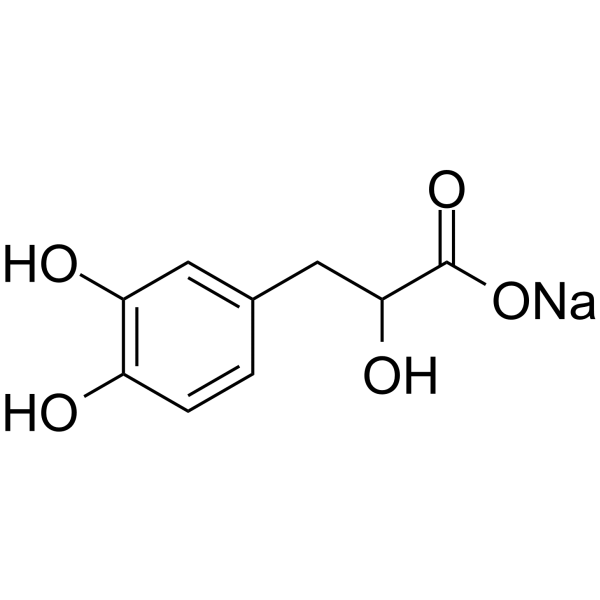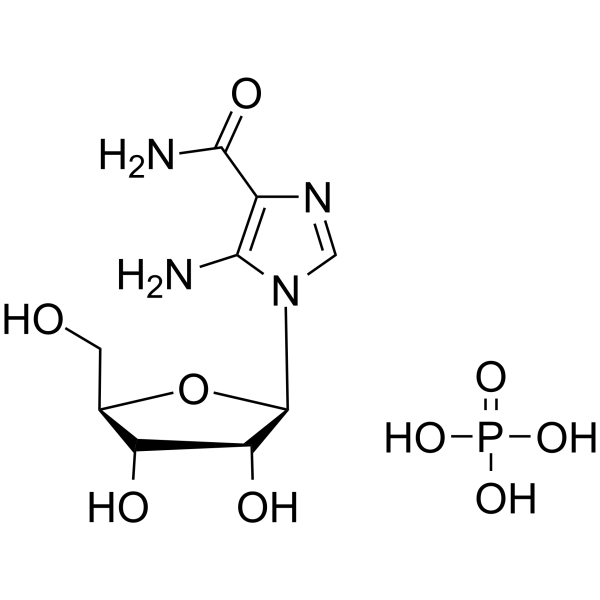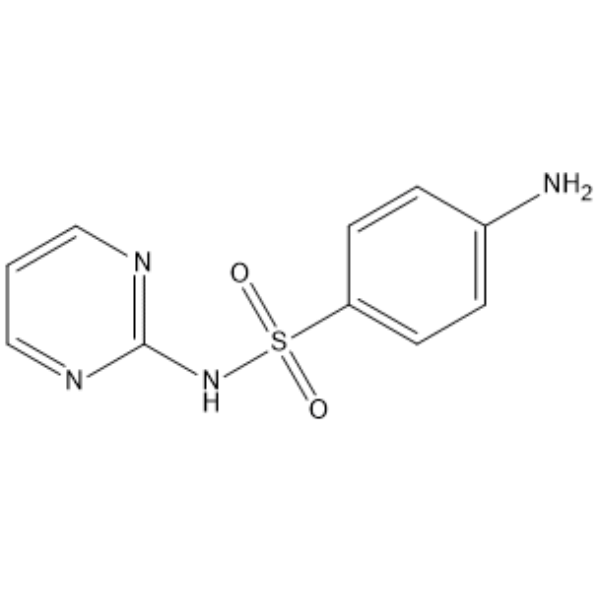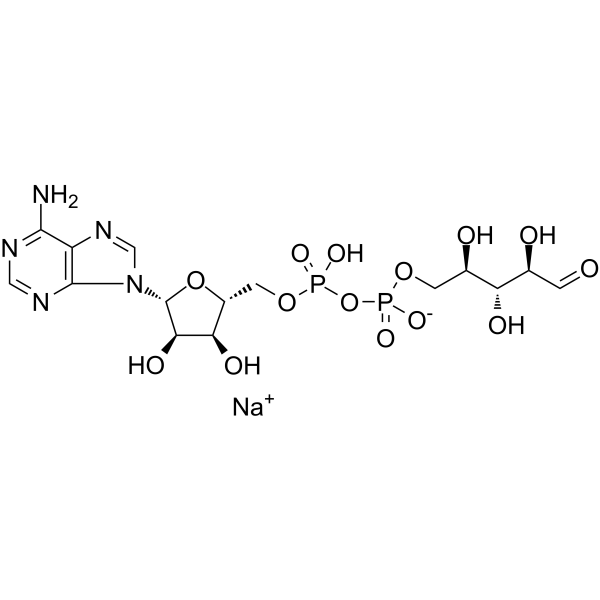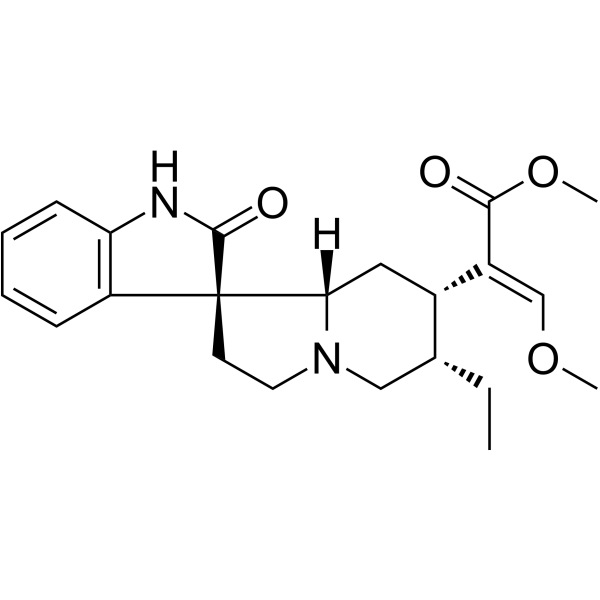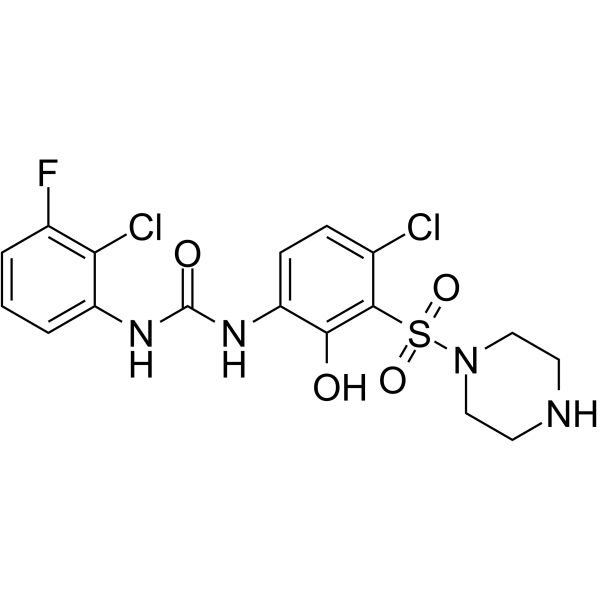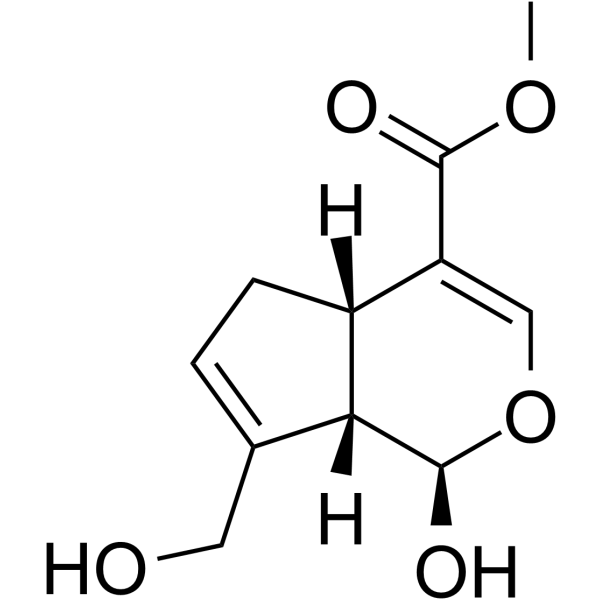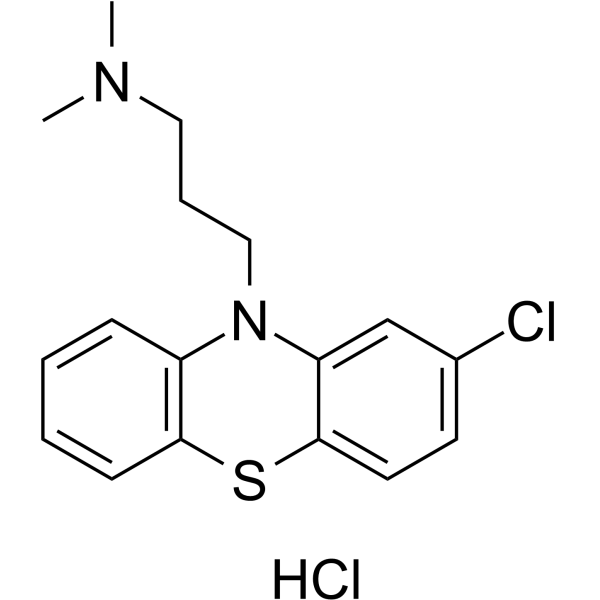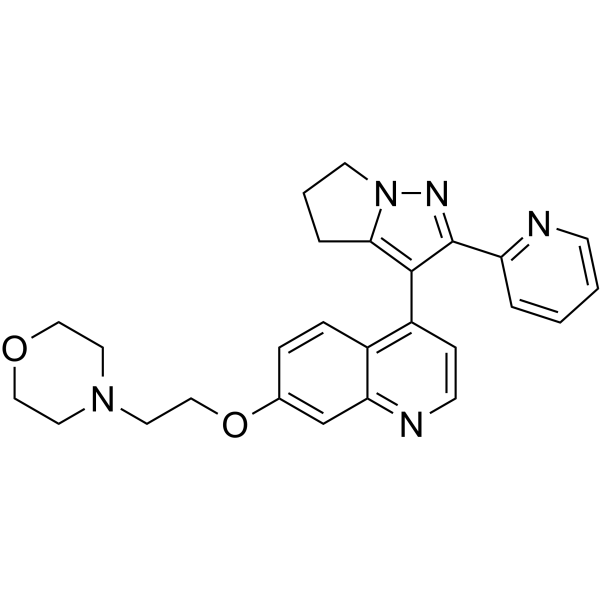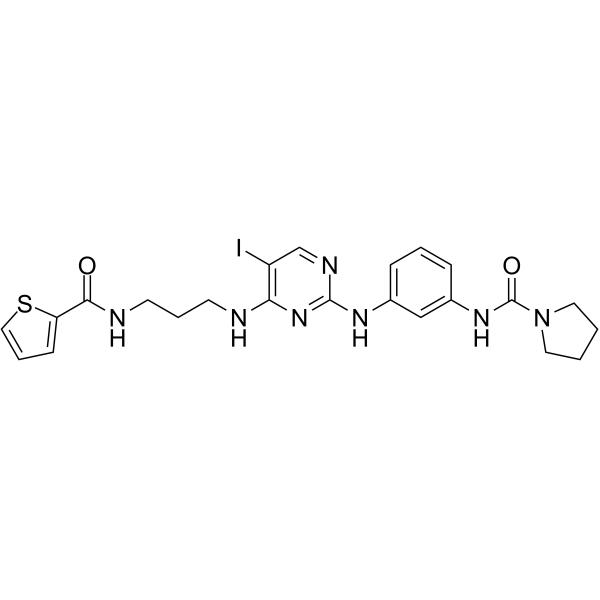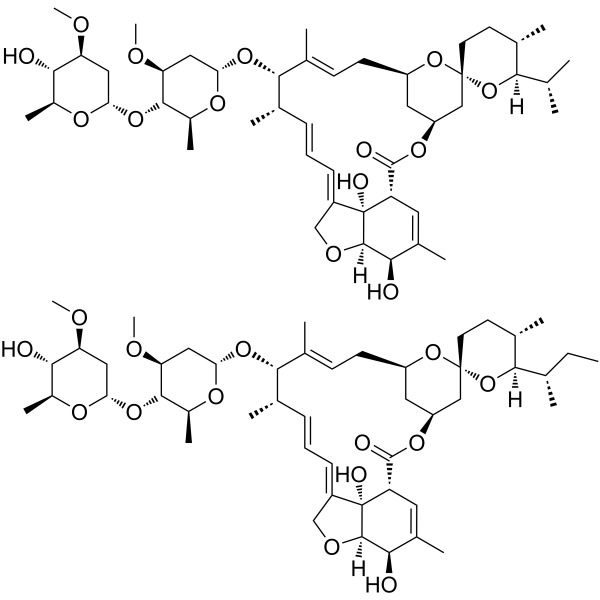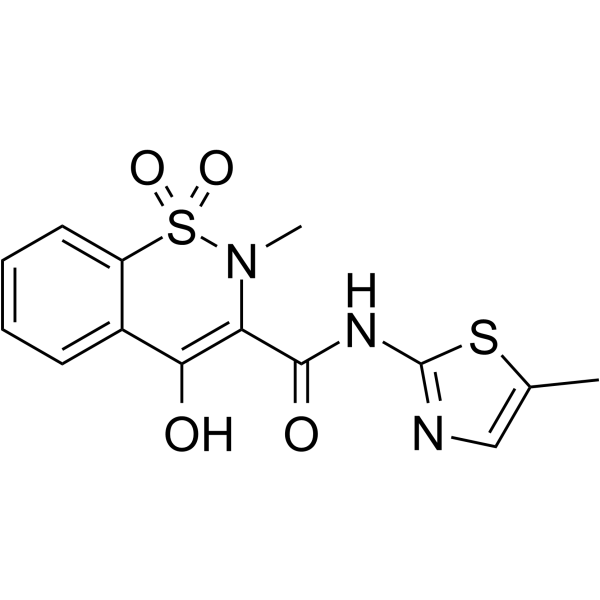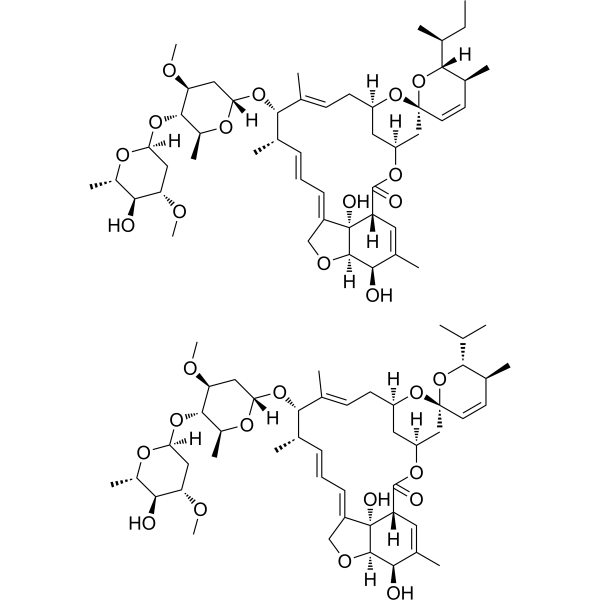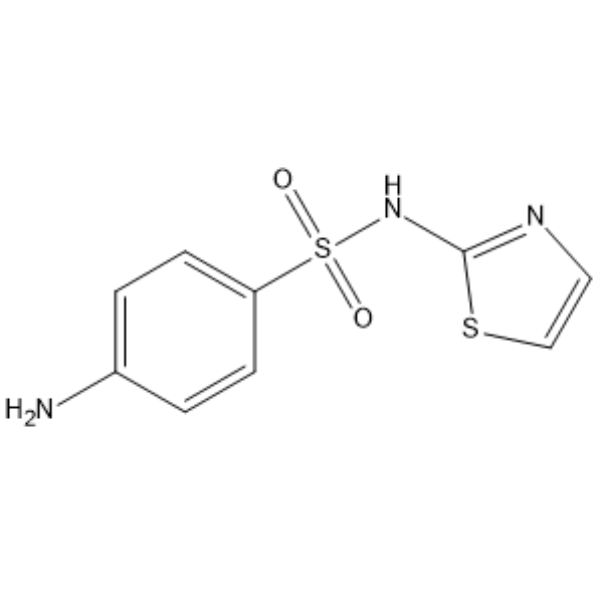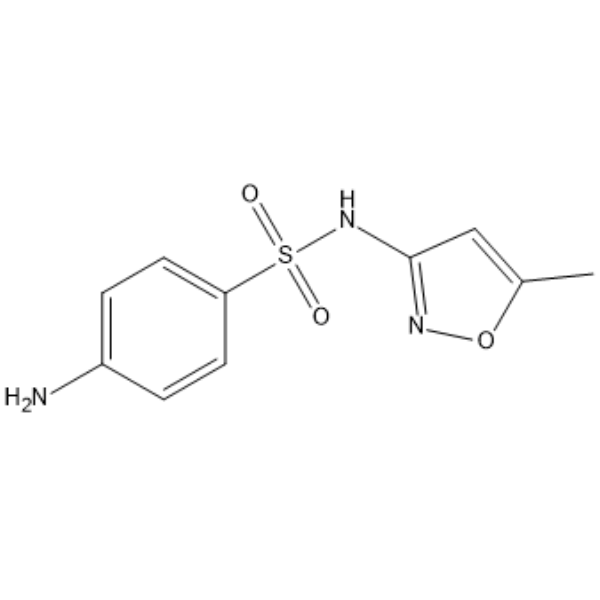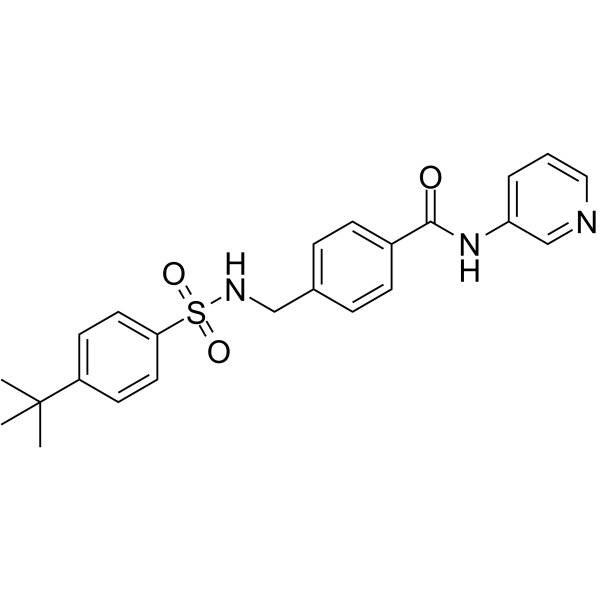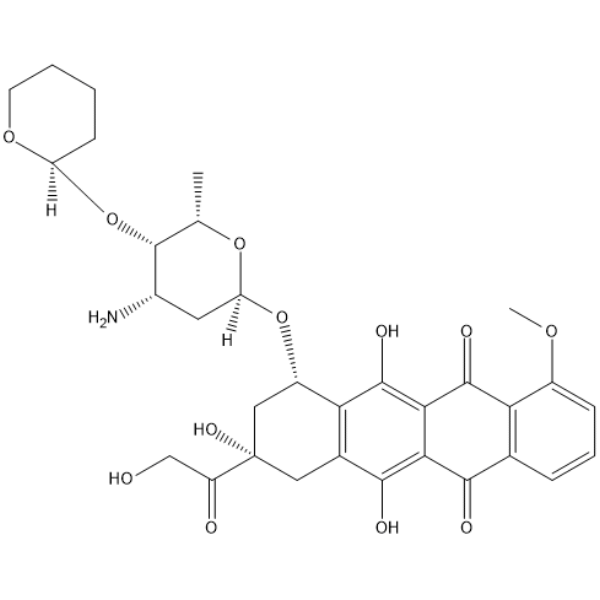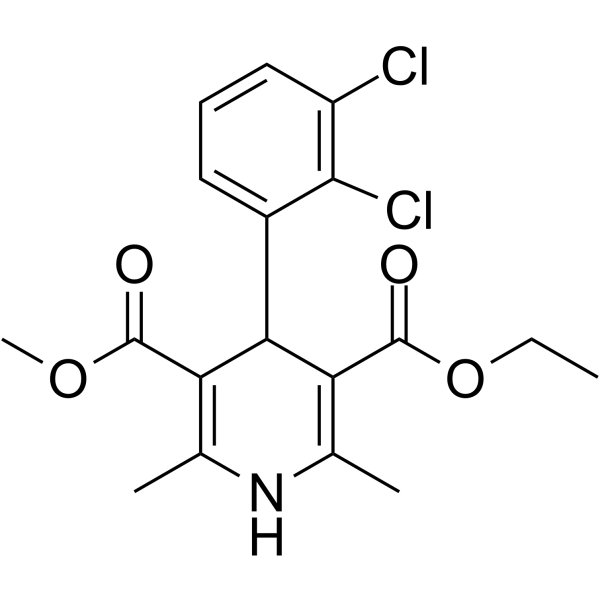|
BP12798
|
Danshensu sodium salt
|
|
|
|
|
Danshensu (sodium salt) is sodium salt of danshensu from the widely used Chinese herb Danshen. It can inhibited phenylephrine- and CaCl2-induced vasoconstriction in Ca2+-free medium.
|
|
BP12799
|
AICAR phosphate
|
|
|
|
|
AICAR phosphate (Acadesine phosphate) is an adenosine analog and a AMPK activator. AICAR phosphate regulates the glucose and lipid metabolism. It inhibits proinflammatory cytokines and iNOS production.
|
|
BP12800
|
Sulfadiazine
|
|
|
|
|
Sulfadiazine is a synthetic pyrimidinyl sulfonamide derivative, short-acting bacteriostatic Sulfadiazine inhibits bacterial folic acid synthesis by competing with para-aminobenzoic acid. It is used in combination with pyrimethamine to treat toxoplasmosis in patients with acquired immunodeficiency syndrome and in newborns with congenital infections.
|
|
BP12801
|
Adenosine 5′-diphosphoribose sodium
|
|
|
|
|
Adenosine 5'-diphosphoribose sodium (ADP ribose sodium) is a NAD+ metabolite. It is the most potent and primary intracellular Ca2+-permeable cation TRPM2 channel activator. It also can enhance autophagy.
|
|
BP12802
|
Corynoxine
|
|
|
|
|
Corynoxine is a natural oxindole alkaloid and induces autophagy in different neuronal cell lines, including N2a and SHSY-5Y cells.
|
|
BP12803
|
Elubrixin
|
|
|
|
|
Elubrixin inhibits neutrophil CD11b upregulation (IC50 of 260.7 nM) and shape change (IC50 of 310.5 nM). Elubrixin can be used for inflammatory diseases such as inflammatory bowel disease and airway inflammation. Elubrixin is a potent, selective, competitive, reversible and orally active CXCR2 antagonist and an IL-8 receptor antagonist.
|
|
BP12804
|
Genipin
|
|
|
|
|
Genipin, an active aglycone derived from an iridoid glycoside called geniposide, is found in the fruit of Gardenia jasminoides Ellis.
|
|
BP12805
|
Chlorpromazine hydrochloride
|
|
|
|
|
Chlorpromazine hydrochloride is the prototypical phenothiazine antipsychotic drug. Like the other drugs in this class chlorpromazine's antipsychotic actions are thought to be due to long-term adaptation by the brain to blocking DOPAMINE RECEPTORS. Chlorpromazine has several other actions and therapeutic uses, including as an antiemetic and in the treatment of intractable hiccup.
|
|
BP12806
|
LY2109761
|
|
|
|
|
LY2109761 is a novel selective TGF-β receptor type I/II (TβRI/II) dual inhibitor with Ki of 38 nM and 300 nM, respectively; shown to negatively affect the phosphorylation of Smad2.
|
|
BP12807
|
Physalin H
|
|
|
|
|
Physalin H is an Hh signaling inhibitor blocks GLI1-DNA-complex formation, it also strong quinone reductase induction activity with IR (Induction ratio, QR induction activity) value of 3.74±0.02. Physalin H shows immunosuppressive effects on T cells both in vitro and in vivo, and the immunosuppressive activity might be attributed to the suppression of T cell activation and proliferation, the modulation of Th1/Th2 cytokine balance and the induction of HO-1 in T cells. Physalin H shows significant in vitro leishmanicidal activities (0.92-19.4 microg/ml) against promastigotes of Leishmania major.Physalin H shows cytotoxic activity against a panel of human and murine cancer cell lines.
|
|
BP12808
|
BX795
|
|
|
|
|
BX795 is an effective and selective PDK1 inhibitor (IC50: 6 nM), and its selectivity is 140- and 1600-fold for PDK1 over PKA and PKC in cell-free assays, respectively. Meanwhile, the selectivity for PDK1 is 100-fold than GSK3β.
|
|
BP12809
|
Ivermectin
|
|
|
|
|
Ivermectin is a glutamate-gated chloride channel (GluCls) activator, with antiparasitic activity.
|
|
BP12810
|
Daurisoline
|
|
|
|
|
Daurisoline is a hERG inhibitor and also an autophagy blocker.
|
|
BP12811
|
Meloxicam
|
|
|
|
|
Meloxicam is a Nonsteroidal Anti-inflammatory Drug. The mechanism of action of meloxicam is as a Cyclooxygenase Inhibitor. The chemical classification of meloxicam is Nonsteroidal Anti-inflammatory Compounds.
|
|
BP12812
|
Avermectin B1
|
|
|
|
|
Avermectin B1 (Abamectin) is served as anthelmintic and insecticide.
|
|
BP12813
|
Sulfathiazole
|
|
|
|
|
Sulfathiazole, an organosulfur compound, has been served as a short-acting sulfa medicine.
|
|
BP12814
|
Sulfamethoxazole
|
|
|
|
|
Sulfamethoxazole is a Sulfonamide Antimicrobial. The mechanism of action of sulfamethoxazole is as a Cytochrome P450 2C9 Inhibitor. The chemical classification of sulfamethoxazole is Sulfonamides.
|
|
BP12815
|
STF-31
|
|
|
|
|
STF-31 is an inhibitor of glucose transporter 1 (GLUT1) with IC50 of 1 μM.
|
|
BP12816
|
Pirarubicin
|
|
|
|
|
Pirarubicin is an anthracycline antibiotic. It is also a DNA/RNA synthesis inhibitor that intercalates into DNA and interacts with topoisomerase II, utilized as an antineoplastic agent.
|
|
BP12817
|
Felodipine
|
|
|
|
|
Felodipine is a longlasting 1, 4-dihydropyridine calcium channel repressor.
|
